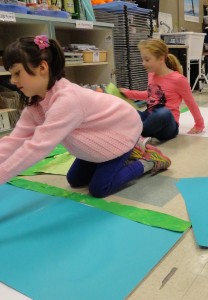 There’s a lot going on in 3E. We’re learning about food chain and food webs, making our zoo habitats and working to complete our informational paragraphs. We’re planning to set up a new “art gallery” featuring our animals so you’ll have a preview of what you’ll be seeing as you enter our zoo. We’re reading and writing and doing science and math projects most days. We’re also working very hard to behave in thoughtful ways to support learning for everyone.
There’s a lot going on in 3E. We’re learning about food chain and food webs, making our zoo habitats and working to complete our informational paragraphs. We’re planning to set up a new “art gallery” featuring our animals so you’ll have a preview of what you’ll be seeing as you enter our zoo. We’re reading and writing and doing science and math projects most days. We’re also working very hard to behave in thoughtful ways to support learning for everyone.
SEL – Self-Awareness and Responsible Decision Making
We’ve gathered together our reflections and set learning goals for the year. We’ve set goals as a class, and the children have set their own. They have an idea about what they would like to achieve as readers, writers and mathematicians. They know what their strengths are and what their challenges are. Each child has chosen work to show who they are as beginning 3rd grade learners.
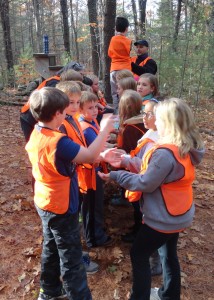 It is challenging to write about thinking and learning. Some of their reflections and goals will make you smile. They are beginning to realize that they are in charge of what they accomplish. They are growing each day and working to positively impact our learning community.
It is challenging to write about thinking and learning. Some of their reflections and goals will make you smile. They are beginning to realize that they are in charge of what they accomplish. They are growing each day and working to positively impact our learning community.
Pushes and Pulls All Around
This week we’ve continued learning about invisible forces – pushes and pulls – and how engineers use what they know about lines of force to create and build. We explored pushes and pulls by creating “Hopper Poppers.” We learned how to launch them and then tried to think of ways to modify them to change or increase their lift. Next, we learned about bridges and how they are built. We learned about pillars and arches. We learned about suspension bridges and about trusses. We learned some about the story of how The Golden Gate was designed. Later, we used our information to build a bridge with two sheets of paper. At first, “that’s impossible” was heard throughout the room, but then we discovered how folding (making trusses) makes the paper stronger. We learned how arches change the lines of force by pushing up. Our strongest designs used pillar to support the span of the bridge. It was fun to see how the groups worked and persevered. Our next challenges involve learning about friction and gravity.
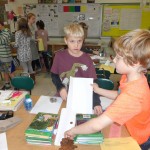
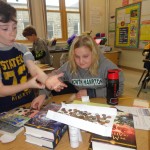
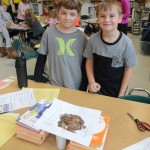
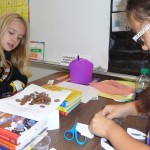
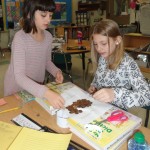 Hands-on science is fun. You may notice that your child is coming home with unfinished papers related to these topics. At this point in our study the class is quick to make and build, to do and create. Planning and recording are low on the priority scale at this point and that’s fine. When you talk to your child about these projects you can hear what they are learning and thinking and discovering. We can tell their curiosity is growing as well as they understanding and that’s what science is all about – developing a sense of wonder and asking, “what if…”
Hands-on science is fun. You may notice that your child is coming home with unfinished papers related to these topics. At this point in our study the class is quick to make and build, to do and create. Planning and recording are low on the priority scale at this point and that’s fine. When you talk to your child about these projects you can hear what they are learning and thinking and discovering. We can tell their curiosity is growing as well as they understanding and that’s what science is all about – developing a sense of wonder and asking, “what if…”
Rounding Numbers and Learning More About Problem Solving
This week we learned about rounding up and down. We are comfortable rounding to the nearest 10. We are learning how this process extends toward rounding to the nearest 100 and 1,000. Larger amounts are challenging for the children to think about and organize. They can easily picture how tens group into hundreds. Beyond that is a challenge, but they are working to feel more secure about the rules of mathematics – 5, 6, 7, 8, 9 round up; 4, 3, 2, 1 round down whether ones, tens or hundreds.
We’ve also been working to solve problems as efficiently as possible. You’ll notice changes back and forth between adding and multiplying. We need to practice different fact sets. In class we’re working to bring automaticity to 2’s and 5’s and we’re exploring the power of 10.
Bits and Pieces –
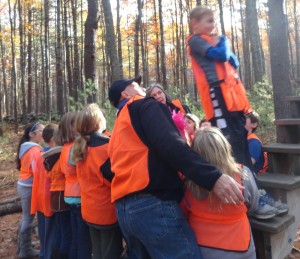 We all participated in the Trust Fall Challenge with Mr. Caron. It was scary and exciting. Even though we have a very talkative class and one that jokes when it might be nice to be serious, we all realized we can count on each other. That’s nice.
We all participated in the Trust Fall Challenge with Mr. Caron. It was scary and exciting. Even though we have a very talkative class and one that jokes when it might be nice to be serious, we all realized we can count on each other. That’s nice.
We began our fourth chapter read-aloud, School Days According to Humphrey. We are looking forward to what happens in Room 26.
We are looking forward to our conferences and sharing our work with you.

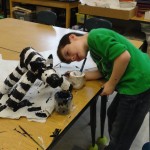 We are also looking forward to setting up our zoo. We’ve been creating our habitats and writing about our animals. We’ve explored a variety of leads so you’ll be encouraged to stop by and read our information posted with our exhibit.
We are also looking forward to setting up our zoo. We’ve been creating our habitats and writing about our animals. We’ve explored a variety of leads so you’ll be encouraged to stop by and read our information posted with our exhibit.
 Tera said she would make snowflakes for the 6 friends who asked her to make them one. It takes her 21 minutes to make each snowflake.
Tera said she would make snowflakes for the 6 friends who asked her to make them one. It takes her 21 minutes to make each snowflake.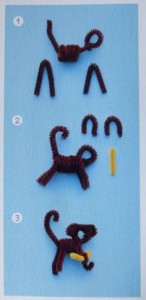 Samantha decided that she would make pipe cleaner monkeys for her 17 classmates. She thought they were fun and hoped her friends would too. She needed 5 pipe cleaners to make each monkey. How many pipe cleaners did she need altogether?
Samantha decided that she would make pipe cleaner monkeys for her 17 classmates. She thought they were fun and hoped her friends would too. She needed 5 pipe cleaners to make each monkey. How many pipe cleaners did she need altogether?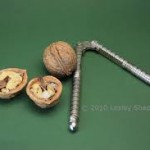
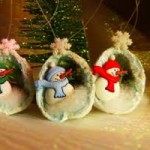

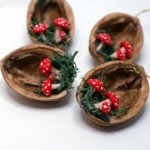
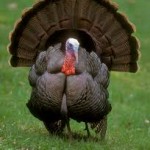
 There’s a lot going on in 3E. We’re learning about food chain and food webs, making our zoo habitats and working to complete our informational paragraphs. We’re planning to set up a new “art gallery” featuring our animals so you’ll have a preview of what you’ll be seeing as you enter our zoo. We’re reading and writing and doing science and math projects most days. We’re also working very hard to behave in thoughtful ways to support learning for everyone.
There’s a lot going on in 3E. We’re learning about food chain and food webs, making our zoo habitats and working to complete our informational paragraphs. We’re planning to set up a new “art gallery” featuring our animals so you’ll have a preview of what you’ll be seeing as you enter our zoo. We’re reading and writing and doing science and math projects most days. We’re also working very hard to behave in thoughtful ways to support learning for everyone. It is challenging to write about thinking and learning. Some of their reflections and goals will make you smile. They are beginning to realize that they are in charge of what they accomplish. They are growing each day and working to positively impact our learning community.
It is challenging to write about thinking and learning. Some of their reflections and goals will make you smile. They are beginning to realize that they are in charge of what they accomplish. They are growing each day and working to positively impact our learning community.



 Hands-on science is fun. You may notice that your child is coming home with unfinished papers related to these topics. At this point in our study the class is quick to make and build, to do and create. Planning and recording are low on the priority scale at this point and that’s fine. When you talk to your child about these projects you can hear what they are learning and thinking and discovering. We can tell their curiosity is growing as well as they understanding and that’s what science is all about – developing a sense of wonder and asking, “what if…”
Hands-on science is fun. You may notice that your child is coming home with unfinished papers related to these topics. At this point in our study the class is quick to make and build, to do and create. Planning and recording are low on the priority scale at this point and that’s fine. When you talk to your child about these projects you can hear what they are learning and thinking and discovering. We can tell their curiosity is growing as well as they understanding and that’s what science is all about – developing a sense of wonder and asking, “what if…” We all participated in the Trust Fall Challenge with Mr. Caron. It was scary and exciting. Even though we have a very talkative class and one that jokes when it might be nice to be serious, we all realized we can count on each other. That’s nice.
We all participated in the Trust Fall Challenge with Mr. Caron. It was scary and exciting. Even though we have a very talkative class and one that jokes when it might be nice to be serious, we all realized we can count on each other. That’s nice.
 We are also looking forward to setting up our zoo. We’ve been creating our habitats and writing about our animals. We’ve explored a variety of leads so you’ll be encouraged to stop by and read our information posted with our exhibit.
We are also looking forward to setting up our zoo. We’ve been creating our habitats and writing about our animals. We’ve explored a variety of leads so you’ll be encouraged to stop by and read our information posted with our exhibit.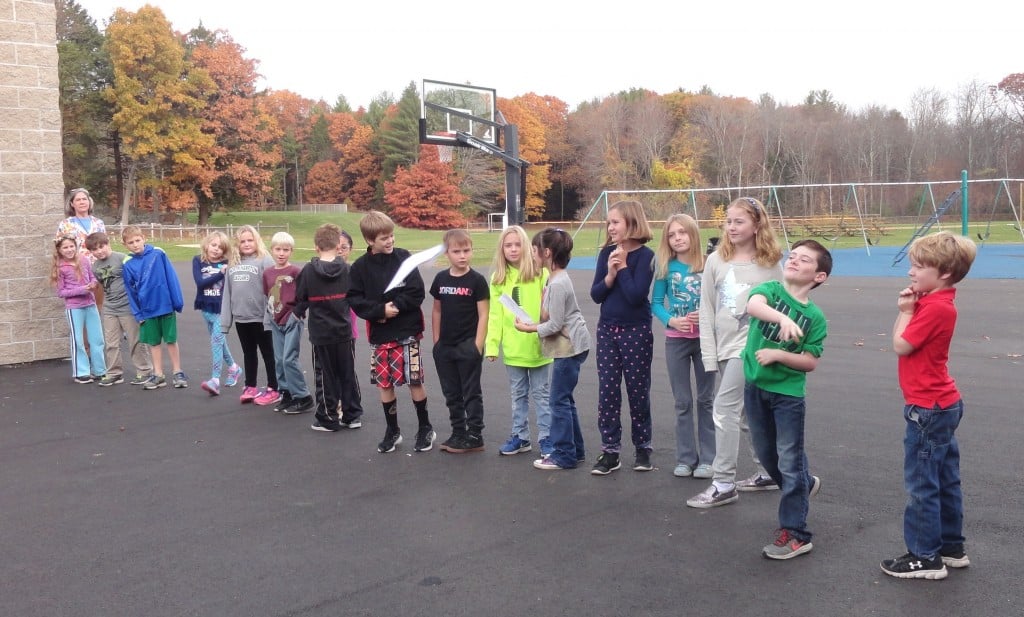 Exploring Invisible Forces
Exploring Invisible Forces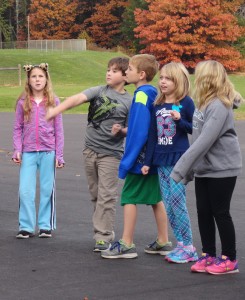 or she has an idea about what shape makes a paper airplane go straight and fast. Ask your child if he or she has ideas of the forces that make an airplane go once it leaves a hand. We know about the push of thrust and the pull of gravity. We know the air provides lift if the wings are just right… We are going to continue our exploration of Invisible Forces over the next few weeks and then we will have another go at folding planes to go straight and fast. I wonder what we’ll discover.
or she has an idea about what shape makes a paper airplane go straight and fast. Ask your child if he or she has ideas of the forces that make an airplane go once it leaves a hand. We know about the push of thrust and the pull of gravity. We know the air provides lift if the wings are just right… We are going to continue our exploration of Invisible Forces over the next few weeks and then we will have another go at folding planes to go straight and fast. I wonder what we’ll discover.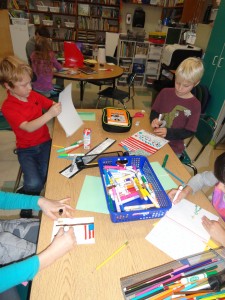 forward to writing more letters to service men and women in the future. It felt good to take a moment to think of the many things we have to be grateful for.
forward to writing more letters to service men and women in the future. It felt good to take a moment to think of the many things we have to be grateful for.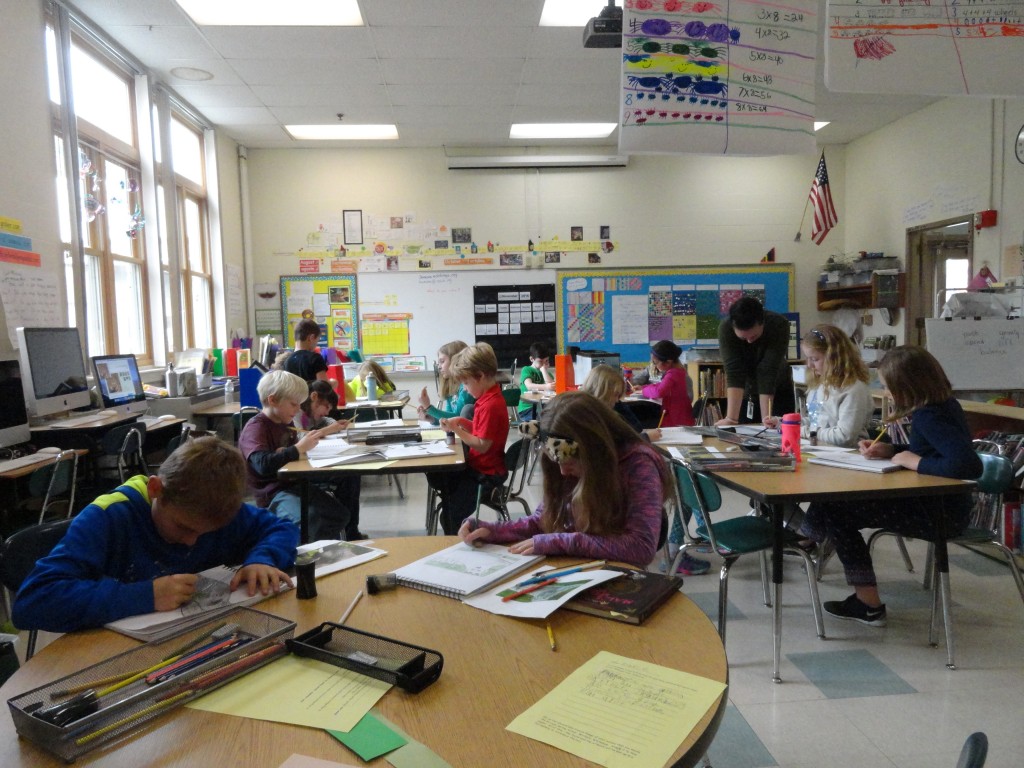
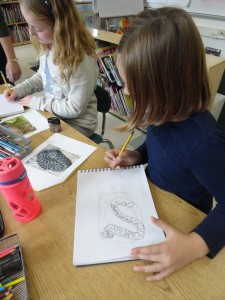
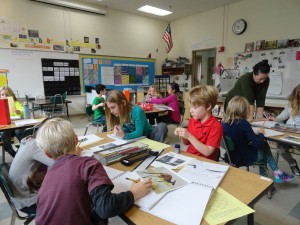
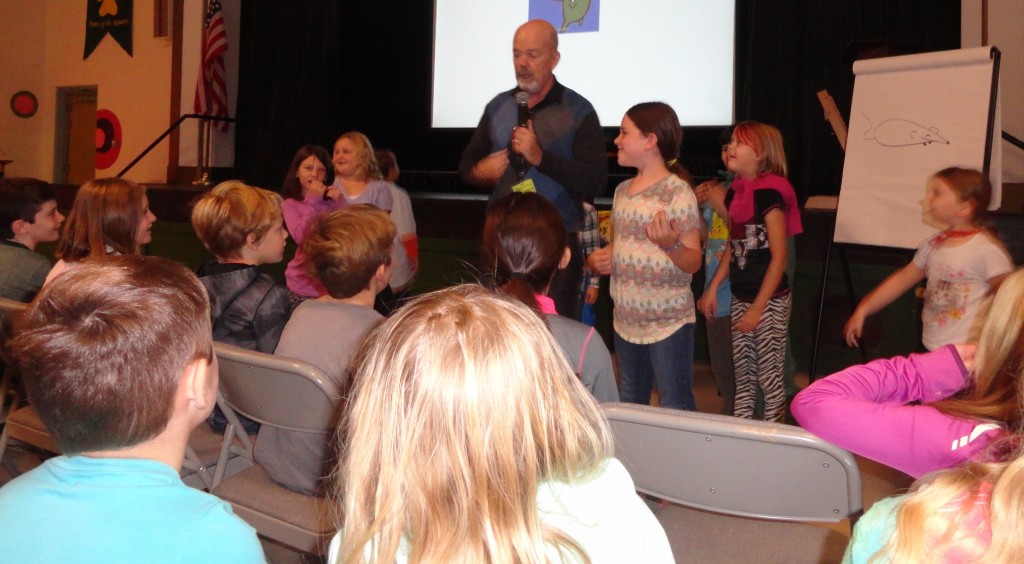 Our week has been full of research, multiplication, small group challenges and whole class challenges. We also had the opportunity to meet Greg Trine, author of the Melvin Beederman, Jo Schmo and Willy Maykit series. It was really fun to meet an author that most of the children knew through his books. He shared how he came to writing and how many years of writing and rewriting and rewriting again it took (12) before he had a story
Our week has been full of research, multiplication, small group challenges and whole class challenges. We also had the opportunity to meet Greg Trine, author of the Melvin Beederman, Jo Schmo and Willy Maykit series. It was really fun to meet an author that most of the children knew through his books. He shared how he came to writing and how many years of writing and rewriting and rewriting again it took (12) before he had a story  published in a magazine. It took six more years after that before he had a story long enough to become a book and then a series. Mr. Trine drew for us, held an evil laugh contest and had members of the audience act out a super hero story as he told it to us. Later on some in our class had the opportunity to meet in the library for lunch with the author. They learned about his upcoming books – a new series with a dog and a cat. We’ll have to look to see when that will be published.
published in a magazine. It took six more years after that before he had a story long enough to become a book and then a series. Mr. Trine drew for us, held an evil laugh contest and had members of the audience act out a super hero story as he told it to us. Later on some in our class had the opportunity to meet in the library for lunch with the author. They learned about his upcoming books – a new series with a dog and a cat. We’ll have to look to see when that will be published. At the end of last week during our discussion about Responsible Decision Making and Self-Management the class decided they would like to do something to reduce disruptive behaviors interfering with learning. Many shared management systems that had been used before to encourage students to be more mindful and respectful. And so we have come up with a process of keeping track of behavior. Talk to your child to see how s/he feels this process is helping make more time for learning.
At the end of last week during our discussion about Responsible Decision Making and Self-Management the class decided they would like to do something to reduce disruptive behaviors interfering with learning. Many shared management systems that had been used before to encourage students to be more mindful and respectful. And so we have come up with a process of keeping track of behavior. Talk to your child to see how s/he feels this process is helping make more time for learning.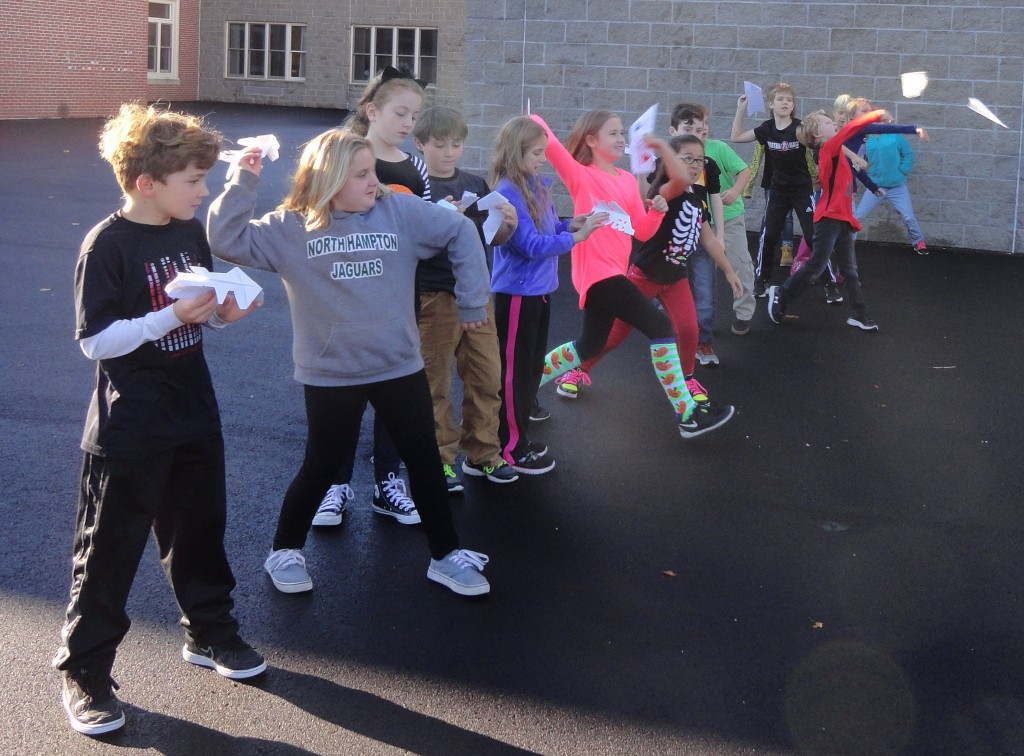 movement.
movement.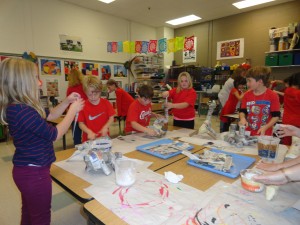 We’ll be working to write letters to soldiers next week for the 50 Letters in 50 Days project. If you’ve decided to do that with your family as well, please send them in with your child next week so they are ready to send on
We’ll be working to write letters to soldiers next week for the 50 Letters in 50 Days project. If you’ve decided to do that with your family as well, please send them in with your child next week so they are ready to send on 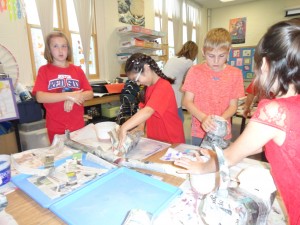 Our Zoo
Our Zoo